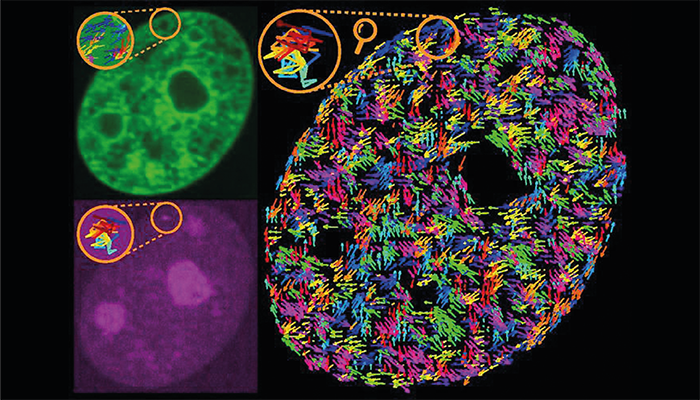
Credit: Image courtesy of Alexandra Zidovska, Department of Physics, NYU.
Researchers have uncovered how the transcription of individual genes drives larger-scale motions within the genome, providing insights into how gene activity influences chromatin dynamics and overall genome organization. With a combination of high-resolution microscopy techniques and displacement correlation spectroscopy (DCS), the study demonstrates how active genes contribute to genome-wide "stirring" motions – a process that could play a significant role in gene regulation and cellular function.
"The genome is 'stirred' by transcription-driven motions of single genes," said Alexandra Zidovska, a professor of physics at New York University and senior author of the study, in a press release. "Genes move differently, depending on whether they are being read or not, leading to complex, turbulent-like motions of the human genome."
The team employed CRISPR-dCas9 technology to fluorescently label individual genes, allowing them to track gene motion over time using high-resolution spinning-disc confocal microscopy. By observing the behavior of specific genes, such as MUC4 and IL6, the researchers were able to compare the motion of these genes in their active (transcribing) and inactive states. At the same time, the researchers used DCS to map broader chromatin movements across the nucleus, revealing a dynamic interaction between gene activity and chromatin behavior.
The main findings? When genes are inactive, they tend to move independently of the larger chromatin structure. However, once activated, these genes drive coordinated motion in the surrounding genome, particularly in regions with lower chromatin compaction. “By revealing these unexpected connections among gene activity, genome compaction, and genome-wide motions, these findings uncover aspects of the genome's spatiotemporal organization that directly impact gene regulation and expression,” added Zidovska.




